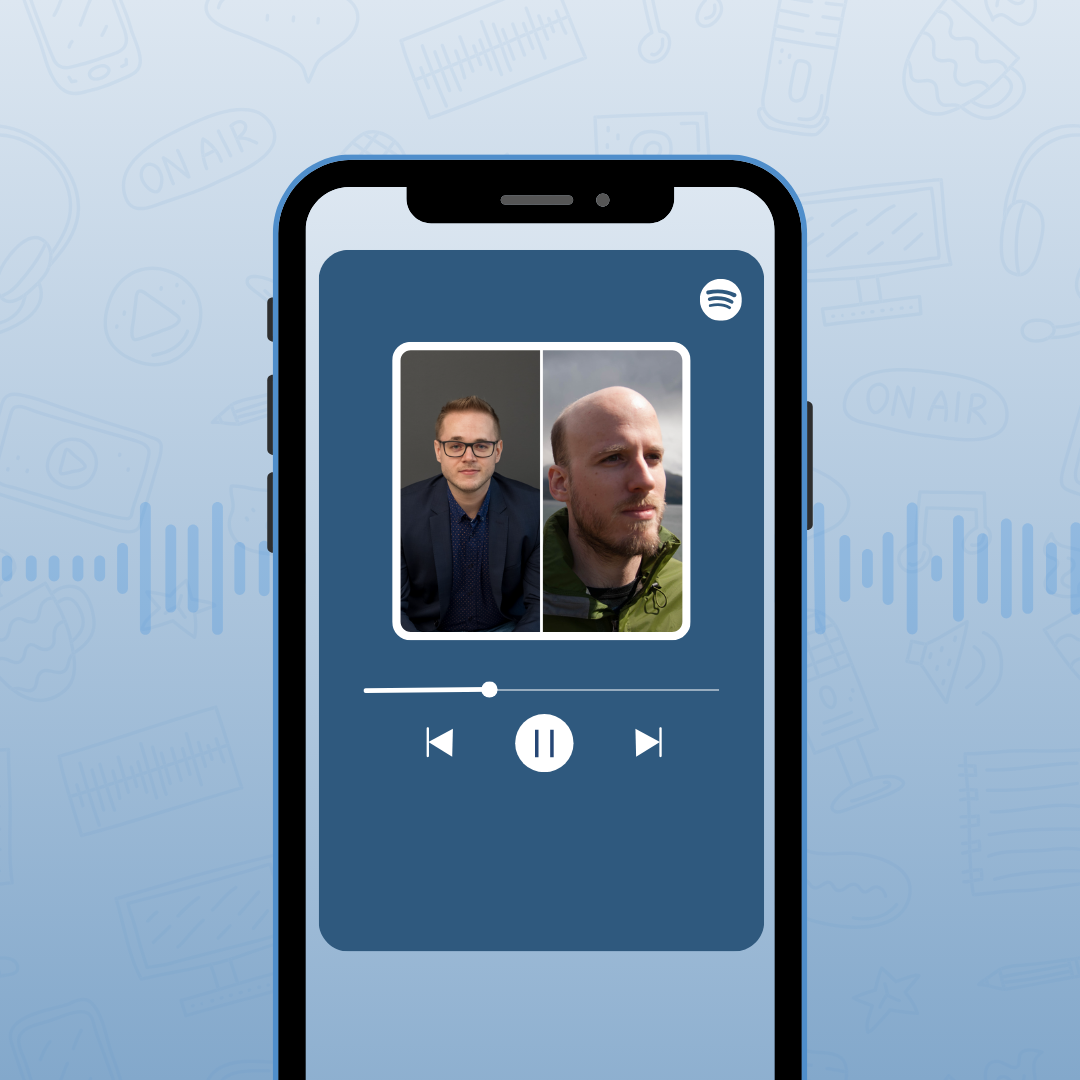
Mastering the Tech Talent Hunt: A Guide to Streamline IT Recruitment
Written by Danubius IT Solutions
Introduction
Navigating IT recruitment is no easy task. The escalating demand for top talents, the ever-growing number of players in the industry, and steadily increasing salaries worldwide necessitate that your recruitment game remains cutting edge.
In order to achieve a standout recruitment process, you’ll need a dedicated team capable of creating a robust system and executing it proficiently. From crafting an engaging, yet honest employer brand to ensure the right roles are allocated to your hiring staff, there's no shortage of tasks to undertake.
The efficiency of the IT recruitment process can significantly impact your company's bottom line. A rapid, yet efficient hiring process can eliminate the costs associated with external recruitment agencies. Even though some companies prefer to fill in the gaps as soon as possible, there are quite a few risks out there if speed is the focus instead of finding the right fit. Hasty decisions without thorough candidate evaluation can result in mis-hiring, an even more costly mistake. The challenge lies in being both efficient and swift, and this article is here to guide you through achieving that balance.
Crafting Job Descriptions and Ads: Your Company's Handshake with Talent
Consider a job description as your company's initial interaction with potential candidates. It's a first impression that can either pull in or push away top talent. A well-formulated job description outlines not only the role and expectations but also provides a peek into your company's culture.
For an impressive introduction, it's crucial to sidestep common missteps many organizations tend to make. These include overuse of buzzwords, unrealistic expectations regarding candidate experience and skillsets, and focusing excessively on the company without highlighting the benefits and essential components of the compensation package.
Adjusting your tone and content to the platform is also essential. LinkedIn may favor a more professional tone, while platforms like Facebook invite a more conversational style. Adapting to the standards of each platform ensures your job description resonates with and attracts your desired talent pool.
Let your job descriptions reflect your company's character. Whether it's laid-back, creative, or high-energy, ensure your language mirrors it. Employ plain language, avoid jargon, and empathize with your ideal candidate. An enticing job description showcases growth opportunities, professional development, and distinctive company perks – but only if you as a company really mean it
Mistakes to Steer Clear of: Unfortunate Examples
To illustrate the points mentioned, let's explore the common mistakes your competitors make through hypothetical companies.
Example #1: Mundane Masters Ltd. - The Generic Recruiters
At Mundane Masters Ltd., recruitment revolves around the basics. Most of their job descriptions are indistinguishable. The company's core values are innovation, dynamism, and uniqueness, and they claim to be market leaders as well.
The catch is, these buzzwords are overused to the point of becoming almost meaningless. Regrettably, the same applies to the qualities they seek in candidates (problem-solvers, team players, self-starters) and what they're willing to offer them (a youthful, family-like environment with a competitive salary and, of course, flexibility).
Their LinkedIn and Facebook ads also lack creativity, attracting minimal interest. Instead of detailing and adopting a conversational tone, they adhere to a formal, corporate style.
Example #2: Quirky Quagmires Ltd. - The Overzealous
At the other end of the spectrum, we find companies trying too hard to be distinctive and memorable. It's always recommended to find a fitting tone of voice, but going overboard can be counterproductive.
Companies like Quirky Quagmires Ltd. are adept at establishing their brand persona and matching tone. However, issues arise during implementation. Overusing informal phrases and slang is a common mistake, especially when targeting fresh graduates and junior professionals.
Regarding job ads, Quirky Quagmires disregards LinkedIn's professional atmosphere, leaning heavily on jokes, puns, and memes. On Facebook, they neglect to share crucial position details and attempt to attract attention by using creative, mismatched job titles like coding ninjas or master Jedi developers.
The Winning Approach
Understanding your target audience and adopting an appropriate tone of voice is key. Coupling these with clear, detailed job descriptions and being upfront about any limitations will foster trust and preemptively eliminate applicants who require components your company can't provide.
When communicating on social media platforms, different strategies are recommended while maintaining the identified tone and employer brand elements. Inviting current employees to share their thoughts, group photos, introduce the workplace and its activities, and highlight the most exciting parts of the package can make your posts more engaging.
Incorporating A/B testing into your recruitment marketing strategy can help pinpoint what works best. By gauging the effectiveness of various versions of a job ad, you can refine your approach based on successful and unsuccessful examples. It's also beneficial to have some colleagues review your ads and descriptions before publishing them.
Mixing Efficiency with Speed
To facilitate the progression of suitable candidates through your recruitment and hiring process, it's essential to correctly structure and delegate key tasks.
Think of recruitment as a funnel. Attracting a large number of applicants requires compelling messaging that inspires them to apply. It's time to reconsider the traditional email and CV mix too. They are progressively being replaced by more convenient application methods, such as LinkedIn-profile URLs and concise application messages, which you need to embrace to stay ahead of the curve.
Once applications start pouring in, timely responses become crucial. Top talents are always in high demand, and swift action by a company can provide a significant advantage - provided the offer is also enticing.
Several strategies can boost your response time and, in turn, your company's appeal. Delegating responsibility to a reliable team member can help ensure punctual replies to every candidate. Automating some responses can also be beneficial, provided they retain a personal touch.
Investing in applicant tracking software can streamline the process, particularly when managing a large volume of applications for a single position. In situations where your team is overwhelmed and unable to respond promptly, clear and honest communication about your current workload can be beneficial. Requesting patience from candidates not only keeps them engaged and reduces anxiety but also provides a candid and humanizing glimpse into your workplace dynamics.
Identifying the Right Candidates
Knowing who to hire requires a deep understanding of the required skills, emotional intelligence, and experience. Two critical steps can ensure this.
Firstly, accurately define the recruitment needs by understanding the organization's IT structure, the skills already in hand, and the gaps that need to be addressed. Clear recruitment needs to streamline the hiring process.
Secondly, effective job descriptions are key. These documents should appeal to the right candidates and serve as a roadmap for the recruitment team during the hiring process. A well-drafted description outlines responsibilities, required qualifications and skills, mirrors the company culture, and highlights unique job benefits.

Screening and Selection
Screening should kick off with a swift review of applications to form a shortlist of candidates who meet the job requirements. It might be beneficial to methodically exclude unqualified candidates rather than immediately trying to spot the perfect fits.
To prevent any chance of overlooking potential good matches, introducing a pre-screening stage might be a good idea. This stage could involve short phone calls to discuss knockout criteria, ensuring that no suitable candidates are prematurely dismissed. This approach also stops applicants who aren't a good fit from progressing to the next stage, saving your hiring team some valuable time.
Before we move on, there's a common hiring practice we need to touch upon. Many companies feel the temptation to send out tasks to solve to interview participants before they come in for a job interview. While this might seem like a sensible way to vet candidates, in the field where there's a shortage of workers, like IT, it's not always the best strategy.
Firstly, candidates who are still in the early stages of getting to know your company might not be willing to dedicate several hours to complete these tasks. They may not yet be convinced that the potential benefits of working for your organization outweigh the time investment required for these exercises.
Secondly, the digital nature of these tasks makes them vulnerable to various forms of cheating. Candidates can easily seek help from others, utilize the vast resources available online including Google, or even employ AI-based helpers like ChatGPT to assist them. However, finding the right answers on the internet fast can be a very important skill, but this may not be the one we would like to measure here.
The key to fair and effective assessment lies in designing an engaging, transparent, and equitable hiring process that respects candidates' time, tests relevant skills, and offers a realistic job preview while minimizing the potential for dishonest practices.
Technical and Soft Skills Evaluation
After screening, it's time to assess the shortlisted candidates' technical skills through methods such as technical interviews, coding tests, and problem-solving tasks. Maintaining consistency in your evaluation methods is important for fairness and to facilitate comparisons.
While technical skills are vital in IT roles, soft skills like problem-solving, communication, teamwork, and adaptability are becoming increasingly significant. Behavioral interviews and situational judgement tests can be employed to evaluate these competencies.
Offer and Onboarding
When you identify the right candidate, careful negotiation and extending the job offer are the next steps. This stage needs a delicate touch because a poor negotiation experience can cool a candidate down. In addition to a competitive salary, the offer should accentuate benefits, advancement opportunities, and other unique features of your organization. Where possible, aim to personalize key parts of the offer to resonate with the candidate's interests and future goals.
Once you’ve shaken hands, you may think you’re all set. However, a well-executed onboarding process remains crucial even after a candidate has been hired. A positive initial experience can significantly boost a new hire's engagement and productivity. Given the critical nature of many IT roles, new hires often need to acclimate quickly. Thus, an informative, welcoming, and supportive onboarding program should be established, emphasizing the company's opportunities and cultivating a friendly environment. It would also be beneficial to involve key colleagues who will be working closely with the new hire as much as possible.
At Danubius, we believe in fostering a welcoming environment for new hires. Therefore, we ensure the entire project team is present during a newcomer's initial days. Sharing a meal with immediate coworkers not only builds engagement but also facilitates a quicker assimilation into our culture. To aid this process, we've developed a Welcome Kit, which includes vital information about the company, office, our standards, and other essential know-hows. It also provides details about additional services and opportunities available to our team members.
Future Improvement
Striving for continuous improvement should be a fundamental part of your recruitment process. Measure the success of your recruitment efforts using Key Performance Indicators (KPIs) like time-to-fill, cost-per-hire, quality-of-hire, and candidate satisfaction. These metrics can pinpoint bottlenecks, assess effectiveness, and provide valuable data for future decision-making.
Key Takeaways
Recruitment in the IT sector is a complex beast. It requires a clear understanding of IT roles and a precise definition of recruitment needs. Compelling job descriptions and efficient sourcing strategies are also a must. Moreover, thorough screening and selection methods, competitive offer negotiation, and an effective onboarding experience are integral parts of the process.
The cherry on top is having robust measurement tools to gauge success, which are vital for sustainable process improvement. By giving due importance to each step of the recruitment process and leveraging the right tools and strategies, your organization can successfully navigate this landscape. This will result in reducing costs and enabling your teams to respond to changing needs with lightning speed.
Exploring Alternatives to Recruitment?
Navigating hiring intricacies isn't for everyone. If you're seeking a more streamlined approach, consider outsourcing with us. Bypass the recruitment hurdles and focus on your core business. Reach out to discuss our solutions to extend your team with our IT professionals!
Interested in IT solutions tailored to your business? Contact us for a free consultation, where we'll collaboratively explore your needs and our methodologies.

.png?alt=media&token=6167f0c8-f152-4da9-8498-30e472899817)
.jpg?alt=media&token=7f5e6011-729e-4df8-bbe4-e97d3ab885a8)
.png?alt=media&token=284268ac-cb06-42d5-8d1d-9e607067237c)

